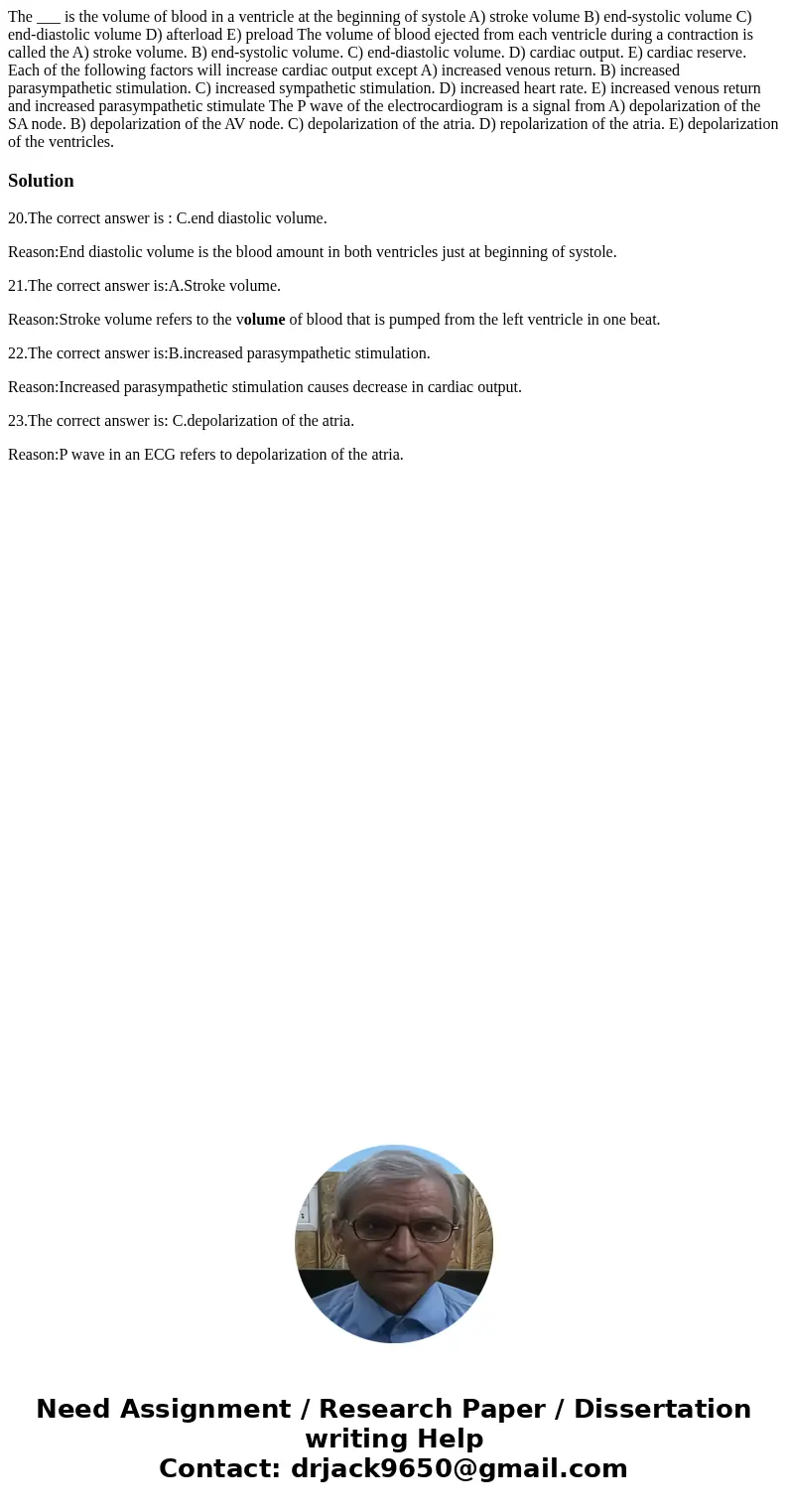The is the volume of blood in a ventricle at the beginning
The ___ is the volume of blood in a ventricle at the beginning of systole A) stroke volume B) end-systolic volume C) end-diastolic volume D) afterload E) preload The volume of blood ejected from each ventricle during a contraction is called the A) stroke volume. B) end-systolic volume. C) end-diastolic volume. D) cardiac output. E) cardiac reserve. Each of the following factors will increase cardiac output except A) increased venous return. B) increased parasympathetic stimulation. C) increased sympathetic stimulation. D) increased heart rate. E) increased venous return and increased parasympathetic stimulate The P wave of the electrocardiogram is a signal from A) depolarization of the SA node. B) depolarization of the AV node. C) depolarization of the atria. D) repolarization of the atria. E) depolarization of the ventricles.
Solution
20.The correct answer is : C.end diastolic volume.
Reason:End diastolic volume is the blood amount in both ventricles just at beginning of systole.
21.The correct answer is:A.Stroke volume.
Reason:Stroke volume refers to the volume of blood that is pumped from the left ventricle in one beat.
22.The correct answer is:B.increased parasympathetic stimulation.
Reason:Increased parasympathetic stimulation causes decrease in cardiac output.
23.The correct answer is: C.depolarization of the atria.
Reason:P wave in an ECG refers to depolarization of the atria.

 Homework Sourse
Homework Sourse